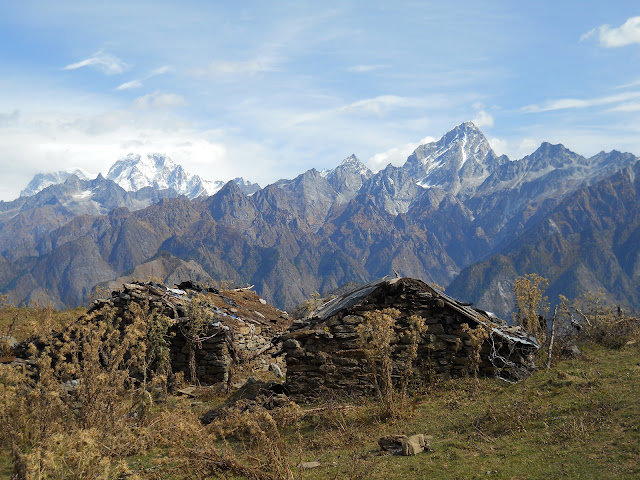Namaste,
I thought I would share with you some of my fun learning
Hindi. My understanding of Hindi is improving quite a bit as is my speaking.
However, I frequently make mistakes, and some of them are funnier than others.
Some can also be quite embarrassing. Not only do I often go, instead of come to
school, and take rather than bring my book, but I also often mix up homophones.
These can make for some hilarious situations. Here are some specific instances
that have happened to me:
-
I put a house in my apple pie crust. (instead of
butter)
-
I printed apples. (rather than peeled them)
-
I drove a watch. (instead of a car)
-
I commented on how beautiful the bottles were in
the sky. (instead of the clouds)
-
I told my teacher my trees were cold. (instead
of my feet)
-
I burped Hindi. (instead of studied Hindi)
-
My most embarrassing moment was when I told
someone I had sex, rather than saying “I went running this morning.” [My
teacher gave me this really funny look and asked (in English) what I was trying
to stay. I told him I went running. Then, he handed me the dictionary to show
me what I actually said. I won’t make that mistake again.]
As far as other things, I made one of my favorite Punjabi
dishes on Monday night as part of my cooking class: saag (spinach) with corn
flour roti. It was delicious. Last week, I also took two short hikes because my
Fulbright friend came to visit Mussoorie. We went back to Flag Hill, to the
Everest House, and a new hike for me was to Binag Tibba. We walked up to a
temple. The entire trip was supposed to take six hours, but we were up in back
in three. Afterwards, we stopped by the Everest House which was close by. I am
attaching some pictures of these outings.
For Thanksgiving, I did not do anything special on the day
of. However, this weekend, I attended two Thanksgiving dinners: one is a group
of Americans and the other is with Language School students. I made pumpkin
risotto which turned out really well (thanks to Mom sending me some vegetable
broth) and apple crumble. Yum! You would think I was gaining weight here in
India from all the good food I eat, but (un)fortunately for me, not everything
is clean (no matter how hard I try to be hygienic, I have gotten sick a few
times). Luckily, the meds seems to work, and I can get almost any prescription
over the counter. I bought two doses of this medicine for 150 Rs (a.k.a. $3).
It’s quite a deal! I guess I should take orders before I head back to the U.S.!
Just kidding!
It’s fun for me to joke about the health system a bit, but
it really is a big problem here in India. There really is no public health
system and no primary care. Also, when you go to the doctor, they both
over-prescribe and don’t really listen to what you need. Indeed many people
don’t know what to do when they encounter a health issue or don’t have the
funds to pay for their medicines and treatment. For example, a friend of mine
who had a heart attack three years ago (he is in his thirties) waited five days
before going to the hospital because his wife was out of town. By the time he
went, a lot of damage had been done (which could have been prevented). Now, he
is struggling both to pay for his medications and understand what medicines he
is supposed to be taking and when. His wife works so hard because he is unable,
but it is not enough. They have three beautiful children and are incredibly
wonderful people.
I just finished reading Amartya Sen’s book India’s Development and Participation. Despite
India’s recent rise in economic terms, there are so many problems to be worked
out. Clean water obviously remains a problem across the entire country.
Especially in big urban cities like Delhi, it’s impossible for anyone to drink
the tap water without getting sick. Unfortunately, it’s not just cow manure, etc.
you have to worry about. Industrial pollution is a huge problem. In addition,
the education system has such a long way to go. Rather than funnel money into
education, the Indian government chooses to invest more in the Indian military.
I don’t want to end on a bad note at all because despite all
its problems, I really love India. The people here are more generous than they
should be at times. The lifestyle is so vibrant, and the food is really good!
It’s a work in progress, as is the U.S., but sometimes I wish they could invest
in things like sewer systems and organized trash pick-up.
That’s it for now. Happy Holidays to everyone back home!
Lots of love,
Margaret
Yes, I know my eyes are closed, but here I am at Flag Hill in my Indian wool suit.
The November sunsets are quite famous here in Mussoorie. From this picture you can see the Winterline.
The ascent of the trek to Binag Tibba.
We reached the top already? This temple looked a lot farther away than it actually was.
Some of the nice river views below.
This will hopefully make it on the Fulbright home page next year. Two water researchers jumping off a hill at the Everest House.
Here is the Everest House being taken over by goats.
Another beautiful sunset!









































































